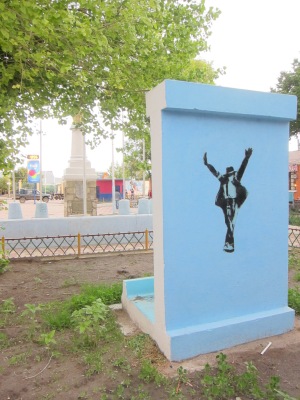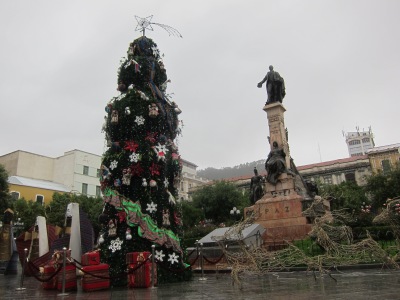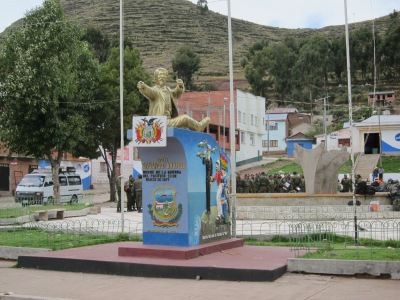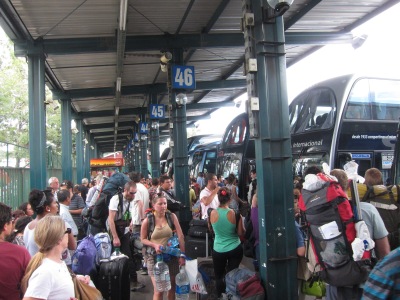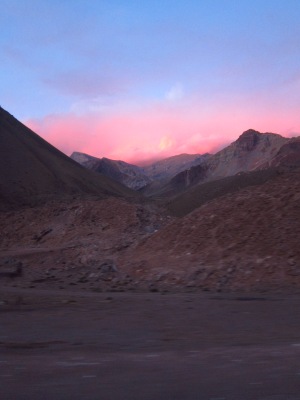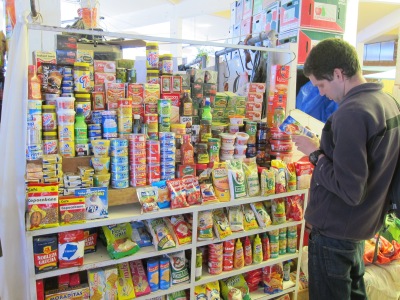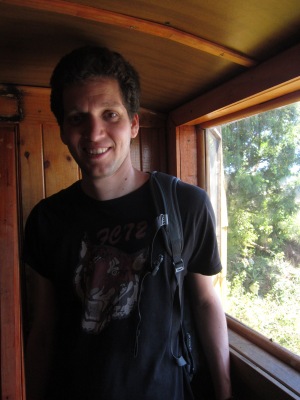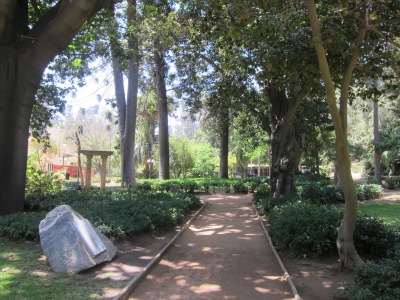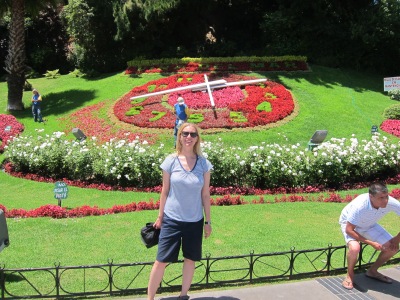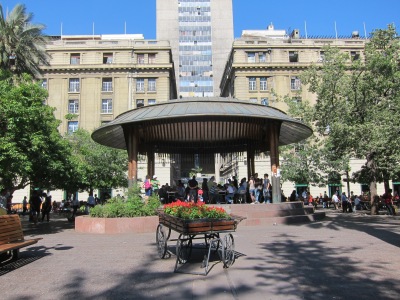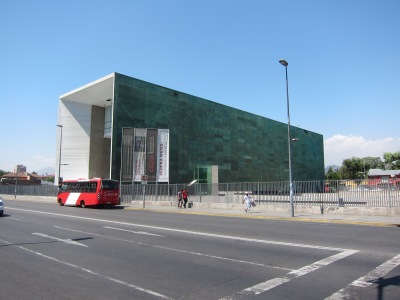As mentioned in my post on La Paz, our next stop in Bolivia was to be Uyuni – which we were heading to to book ourselves onto a Salar de Uyuni (Salt Flats) tour. Whilst a whole post on just the bus journey may seem a little unnecessary (except, of course, I’ve already done just that about the “epic” 18-hour bus journey from Ica to Cusco), I feel like one on our first proper Bolivian bus experience is a must!
A couple of things first. Upon researching our trip, we came across about a thousand blog posts/threads/comments/reviews of buses in Peru and what companies to use and why – not to mention all the (well-deserved) great things written about the cama class on said buses. If you try and research anything to do with bus companies in Bolivia, you’ll most likely come up against a brick wall – there’s no mention of particular bus companies or times. And bus companies certainly don’t have their own websites!
Secondly, and on the flipside to the above, what you do find online is some amusing/scary/unnerving accounts of people’s experiences on bus journeys in the country. I’ve read stories about buses being inches away from cliff slides, almost hanging off the side. Someone wrote about being given a stranger’s baby to hold whilst she tended to her other children. Another about someone else being handed a dirty nappy, which they couldn’t figure out what to do with, so they simply chucked it out the window (with no one batting an eyelid). Plenty of posts about multiple people crammed into just one seat next to a traveller. Lots of comments about being frozen in the middle of the night (travelling in summer – although whilst still cold in the early hours – meant we didn’t experience this). And too many write-ups to count about the bad road conditions (essentially, dirt roads) which result in lonnnng delays.
We used Panasur to make the La Paz – Uyuni journey – the guy at the bus station when we purchased our tickets seemed friendly enough, and even gave us a flyer about the route. A company with its own flyers – fancy! By this stage in our trip, we were less precious about levels of bus service. However, a bunch of travellers staying in our hostel had a last minute panic – the “tourist” bus to Uyuni had been cancelled, and they had to make alternative arrangements! Two things: a) this apparently isn’t too uncommon and b) we didn’t even know there was a “tourist” service. Turns out our company put on an extra bus (hey, how’d they manage that so quick…?) to accommodate the sudden additional demand. We paid 100 Bolivianos (£10) each for our tickets.
We set off more or less on time, settling into our semi-cama seats right at the front of the bus. All semi-cama or cama seats that we came across have footrests that flip backwards, so you’ve essentially got one long seat – a bit like a Lay-Z-Boy recliner. In this case, we were at about the 10% level of comfort of a Lay-Z-Recliner, not least because our feet were in exactly the same position whether we used the footrest or not.
This bus also provided everyone their own thick travel blanket. A girl sitting behind me proclaimed her disgust at the state of her blanket, saying “this is like something my dog would sleep on!”. I completely disagree – any proper pet owner knows that you give your pets only the best, most luxurious and comfortable (and preferably new) blankets to sleep on…and these blankets were nowhere near that good.
Sometime after midnight, our bus came to a halt on a particularly bumpy road. After a few minutes, it moved on again – travelling about 5 metres – and then properly came to a stop, with the driver switching his engine off. Some passengers starting speculating about the cause – were we stopping for a break? Was the driver going to take a nap? Neither of those. We had in fact stopped because another bus had gotten trapped actually in the road itself, with one of its wheels wedged in a dip. Smaller vehicles (i.e. anything that wasn’t a bus) could go round it, but we were trapped there until the bus managed to get rescued, which took a couple of hours. (If anyone wants more specific details, ask Dan. He watched the whole thing. I dozed on and off.) Of course, once the obstacle was out of the way we had to go through the same dip in the road…which we did, without any problems (mainly with the driver flooring the accelerator pedal). I could tell our driver had done this before.
All was well through the early hours until around 7am. The bus came to a complete stop once again…and this time there was no faffing around. Engine off, door open, driver out. One by one, most of the passengers followed him, to find the dirt road twenty metres in front of us partially submerged with an ambulance half stuck in the giant puddle. A group of people from the other vehicles waiting to pass through had gathered around to watch the rescue effort, which we promptly joined. (Note: I saw no evidence of the ambulance actually taking part in any kind of emergency. Well obviously not now it certainly wasn’t…but it also didn’t seem it had been before, either.)
I’m guessing this happens all the time, because they seemed to be quite adept (if not especially quick) in getting the ambulance out and fixing the road. One guy (sat on the hood) held a giant hose with a pump system taking some of the water away. Some men tried to wedge a bit of wood under a rear wheel. A digger tried to get some of the muddy earth out from in front of the ambulance (sometimes dropping some of it over the heads of the men working in a comedy fashion). A tipper truck kept bring more earth to the site so the “road” could be rebuilt once the ambulance had been removed. And another truck was there to pull the ambulance out of the hole it had fallen in to. All of this may have taken another couple of hours – as I said, Dan is the “watching vehicles get rescued from Bolivian roads” expert; after watching for about 10 minutes, I retired to the bus for a bit more of a snooze. However, I did notice that literally a second after the road had finished being rebuilt, our driver floored it once more to zoom past all the trucks lined up in front of us – he clearly wasn’t going to let them damage the road before we could pass!
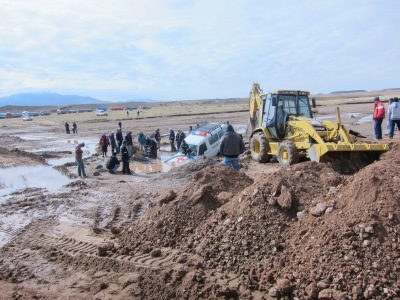
At the end of Back to the Future, when Doc Brown says “Where we’re going…we don’t need roads!”, I didn’t think he meant Bolivia.
(Yes, I did think of that caption as soon as I took this photo. And yes, I have kept it in my head for a month and a half until writing this post now!)
All of these delays meant we pulled in to Uyuni at midday, a full five hours after we were supposed to. Our twelve hour journey had turned into a seventeen hour one…and you know what? It wasn’t even that uncomfortable, tiring or stressful. I suppose when you’re not in a rush to go anywhere, it doesn’t really matter!
Being so delayed, it meant that we had missed that day’s departures for Salar de Uyuni tours. For the reason of frequent delays on buses to Uyuni, it’s wise not to pre-book a tour as you can never be sure when you’re actually going to turn up. But with countless tour companies in Uyuni offering daily departures, you’re almost guaranteed to be able to book something for the next day. (Sometimes even the same day, like we were…despite being so delayed. But we were a little dubious about these companies.)
It turns out that our five hour delay was practically nothing. We had chatted to another traveller in our La Paz hostel just prior to leaving it who was also headed to Uyuni – but on a different bus. We next bumped into her walking through town…at 6pm, when she’d just arrived. That’s an eleven hour delay! Her bus had been caught up in protests (a very common bus-delaying reason in Bolivia), that brought their journey to a standstill for absolutely hours. In fact, we did speculate whether our bus driver had taken an alternative route with a worse road to avoid said protests.
So, our delay meant we stayed a night in Uyuni, booking ourselves onto a Salt Flats tour for the next day. We checked in to the Hotel Julia which our guide book promised had Internet. (It didn’t.) I now see it has some average-to-poor reviews online – but it’s certainly fine for one night. (Aside from our window being next to a restaurant with an outdoor speaker that was pumping music out when we went to bed at 11pm…and still doing the same when we woke up at 7am.)
Uyuni was actually far larger and had much more to it than I anticipated – the way our guide book had described, it had made it sound like it was just one road with a few buildings! It is in fact a proper small town although it’s main purpose these days is as a starting point for Salt Flats tours. There’s a few restaurants and bars in town (it is catering to travellers, after all) but not many sights, so not much to really occupy one’s time beyond one day.
Though you do have to try Minuteman Pizza, a great place run by an American expat. In fact, I’m pretty sure every traveller passing through Uyuni does.



